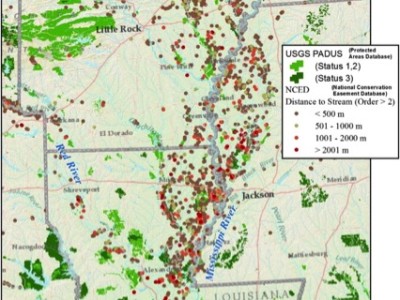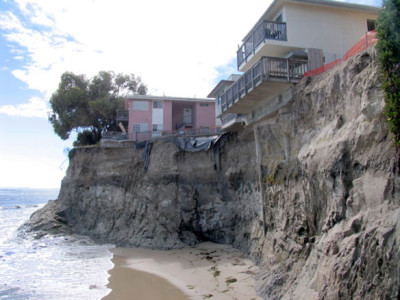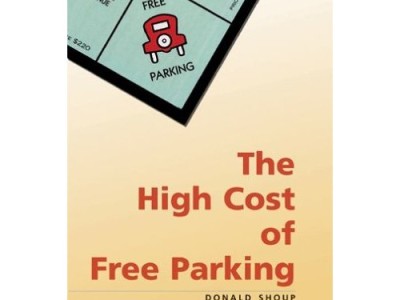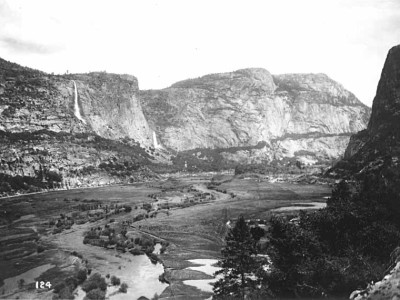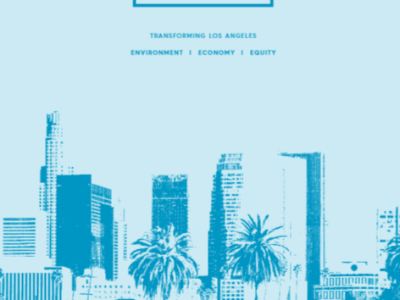Land Use
Clem Shute to be honored by California bar
Boalt alum will follow Joe Sax as second recipient of environmental law lifetime achievement award
This just in, courtesy of Shute, Mihaly & Weinberger — Clem Shute (Boalt ’64) will be honored this fall with the second Award for Lifetime Contribution to the Field of Environmental Law. (The first Award, of course, went to the late Joe Sax.) Clem richly deserves this prestigious award. He has been a major player …
Continue reading “Clem Shute to be honored by California bar”
CONTINUE READINGCould a Riparian Conservation Network increase the ecological resilience of public lands?
A new article suggests river corridors could leverage existing policies to build habitat connectivity
As we try to protect biological diversity for the future, a perpetual challenge is ensuring that the strategies we adopt today will continue to work in the face of changing conditions. How can we design conservation approaches that will be resilient in the face of environmental challenges that will only become more severe in coming years? …
CONTINUE READINGSaving California’s Beaches
New expert report offers recommendations for shoreline armoring management
As California’s beach goers and residents well know, erosion and climate change are already impacting the California coastline. Eighty percent of California’s coast is actively eroding, and the latest science projects that sea levels may rise up to 5 additional feet along much of the coast by the end of this century. Higher sea levels …
Continue reading “Saving California’s Beaches”
CONTINUE READINGCalifornia Supreme Court Upholds Affordable Housing Ordinance
Unanimous Court Rejects Developers’ Takings Challenge to San Jose’s Inclusionary Housing Measure
The California Supreme Court, in a unanimous decision issued today, rejected state developers’ efforts to nullify the City of San Jose’s affordable housing ordinance. That decision, California Building Industry Association v. City of San Jose, is critically important for both state land use policy and for constitutional principles governing private property rights and the proper scope …
Continue reading “California Supreme Court Upholds Affordable Housing Ordinance”
CONTINUE READINGTracking Coastal Adaptation
Implementing CA’s Innovative Sea Level Rise Planning Database
Higher sea levels are already affecting California’s 3400 miles of coastline, millions of coastal residents, economy, buildings, and critical infrastructure. Yet, oddly enough for a state that is a worldwide leader in climate change mitigation, California has only recently begun to focus seriously on sea level rise adaptation. Recent reports have cited a lack of preparedness …
Continue reading “Tracking Coastal Adaptation”
CONTINUE READINGWhat Will Driverless Cars Do To The Climate?
A Formidable Challenge for Policymakers and Modelers
It’s no longer a question of whether driverless cars will appear on the market; it’s when and how many. The answers so far seem to be: 1) soon; and 2) lots. German automakers are so confident of this that they are already negotiating with Nokia to compete to Google’s self-driving cars. For Legal Planet, that means we …
Continue reading “What Will Driverless Cars Do To The Climate?”
CONTINUE READINGRequiem for a Bottom-Feeder
UCLA’s Don Shoup Has Transformed Urban Planning
Every scholar wants to do good, productive, important work, but I suppose all us secretly would like to redefine our fields — to go down in academic history, so to speak. Virtually none of us do. But UCLA’s Don Shoup, who is retiring this year from the Urban Planning department, is one who has. And …
Continue reading “Requiem for a Bottom-Feeder”
CONTINUE READINGThe Battle to Restore Hetch Hetchy Valley Moves to the Courts
New Lawsuit Claims Dam and Reservoir in Yosemite National Park Violate California Constitution
This week, the longstanding battle over the dam and reservoir that have for a century flooded Yosemite National Park’s storied Hetch Hetchy Valley moves to the courts. A new lawsuit, filed by conservationists on the 177th anniversary of John Muir’s birth, asserts that the City of San Francisco’s continued operation of O’Shaughnessy Dam and Hetch Hetchy Reservoir …
Continue reading “The Battle to Restore Hetch Hetchy Valley Moves to the Courts”
CONTINUE READINGLos Angeles Releases First-Ever Urban Sustainability “pLAn”
Envisioning greener energy, cleaner air, and reduced consumption in LA by 2035
Perhaps no metropolis is better positioned than Los Angeles to pioneer ground-breaking environmental initiatives. As the second-largest U.S. city, and with the country’s largest municipally owned utility, a world-class research university–UCLA, and the blessings of abundant sunshine and a temperate Mediterranean climate, Los Angeles could serve as a global model for urban sustainability. Today, the …
Continue reading “Los Angeles Releases First-Ever Urban Sustainability “pLAn””
CONTINUE READINGShut Up, Texas
Environmental Factors Smack Down Another Right-Wing Meme
If like me you are tired of Texans gloating about their supposed “miracle,” today’s post from Kevin Drum brings some good news: For years, business lobbyists complained about what they derided as “job killer” laws that drive employers out of California. Rival state governors, notably former Texas Gov. Rick Perry, made highly publicized visits to …
Continue reading “Shut Up, Texas”
CONTINUE READING




